 |
 |
 |
| |
Ultra-Low Level HIV p24 Production as a Driver of Immune Activation in Individuals Treated with ART
|
| |
| |
CROI 2024 March 3-6 Denver
Enrico Richter1,2, Theresa Bechtel1,2, Antonia Büning1,2, Marek Korencak1,2, Trevor A. Crowell3,4, Heiko Jessen5, Jürgen K. Rockstroh2,6, Stefan Esser7,8, Christoph Boesecke2,6, Hendrik Streeck1,2
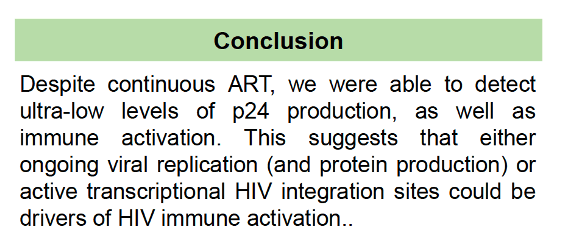
Program Abstract
Background: Similar to the persistent presence of HIV, residual immune activation has been observed despite antiretroviral therapy (ART). It was shown that in treated people with HIV, T cells remain activated even when the virus is undetectable. The causes of this chronic inflammation and immune activation in treated HIV are not fully understood.
Methods: Here, we have developed an ultrasensitive p24 single-molecule array to detect p24 in plasma at a 1000-fold lower concentration (fg/ml) compared to previous assays. This advancement allowed us to analyze people with chronic HIV who are undergoing treatment (with undetectable viral load) and compared it to immune correlates measured by a multicolor immune assay.
Results: We first investigated whether plasma p24 is detectable at ultra-low concentrations in a cohort of 172 individuals with chronic and ART-treated HIV infection, who have maintained HIV RNA levels below the detection limit (<50 HIV RNA copies/ml) for >4 years. Ultra-low level HIV p24 [range 4.5 fg/ml - 330 fg/ml] was detectable in 48 out of 172 individuals (28%). There was no significant correlation between age, gender, ART regimen and the average duration of therapy was identical between groups with or without detectable HIV p24 (p24+: 8.4 years [4.3 - 17]; p24-: 8.4 years [4 - 30]; p>0.05). Next, we hypothesized that ongoing p24 production is responsible for low level immune activation. Indeed, CD8 and CD4 T cells from individuals with detectable HIV p24 showed significantly increased expression of the activation marker CD38 compared to individuals without detectable p24 (p < 0.05). Interestingly, individuals with detectable HIV p24 had significantly higher HIV-specific CD8 T cell responses (p<0.05) despite ongoing treatment, indicating that they are still able to recognize HIV infected cells. We also determined HIV p24 concentration behavior before and after ART initiation as well as from acute to chronic infection. Therefore, we studied 43 people who initiated suppressive ART during acute HIV and remained virally suppressed over a 2-year period. Despite HIV-1 RNA that declined to undetectable levels (<30 copies/mL), p24 levels remained detectable in 25% of individuals one year and 19% of individuals two years after ART start.
Conclusion: Despite continuous ART, we were able to detect ultra-low level of p24 production, suggesting either ongoing viral replication or active transcription.
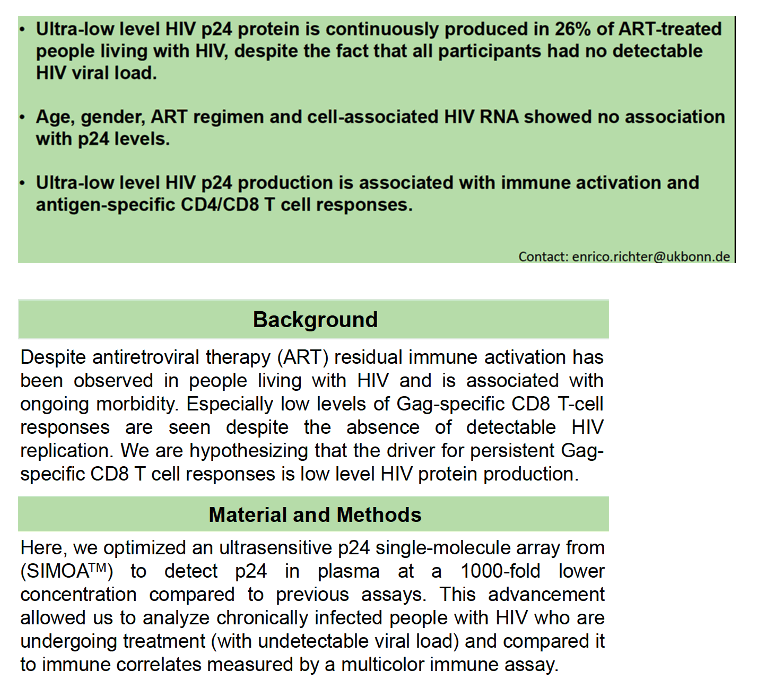
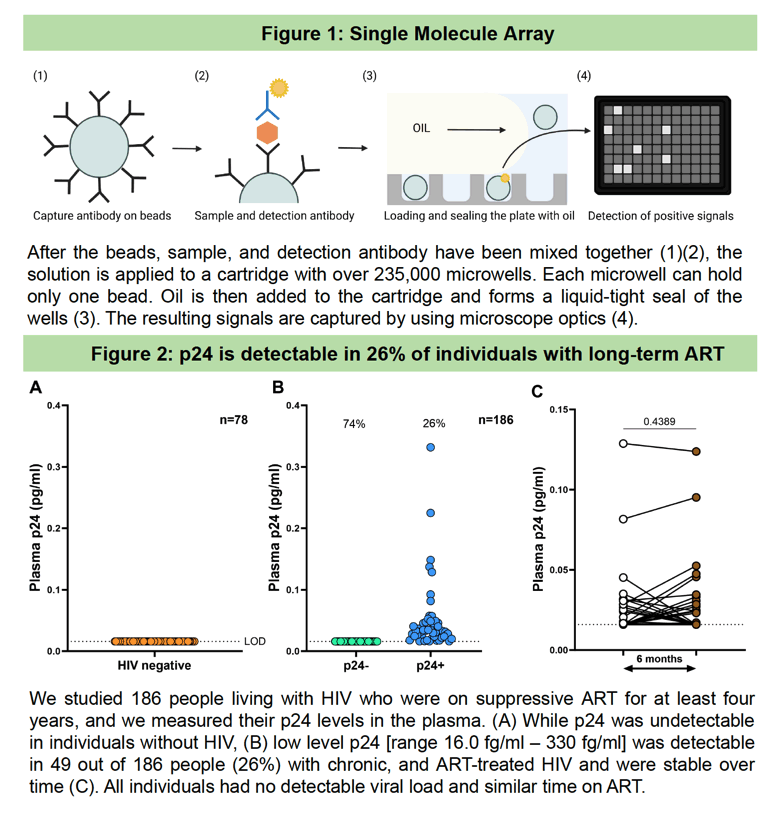
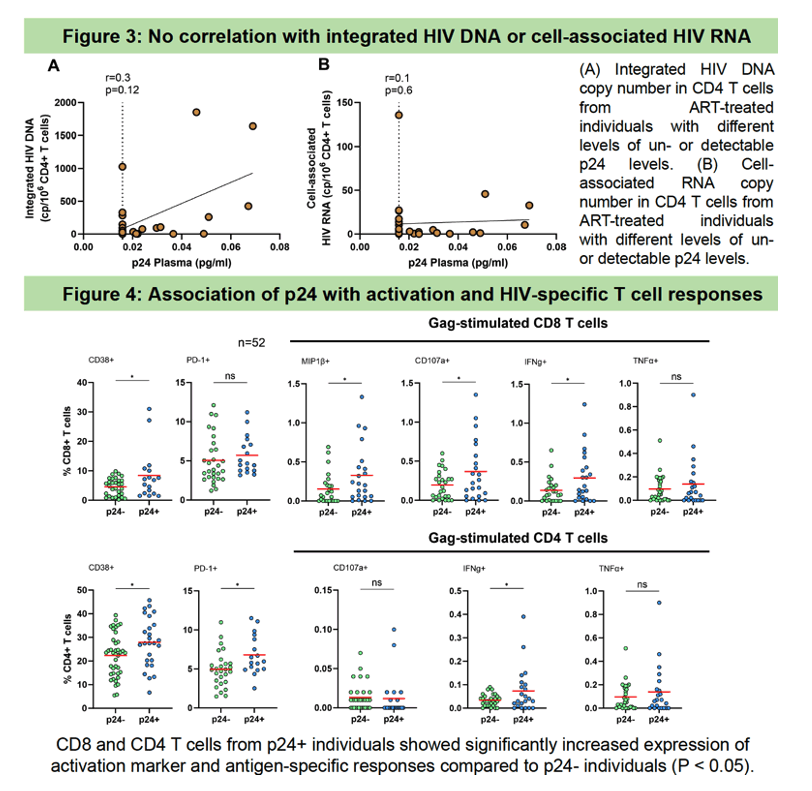
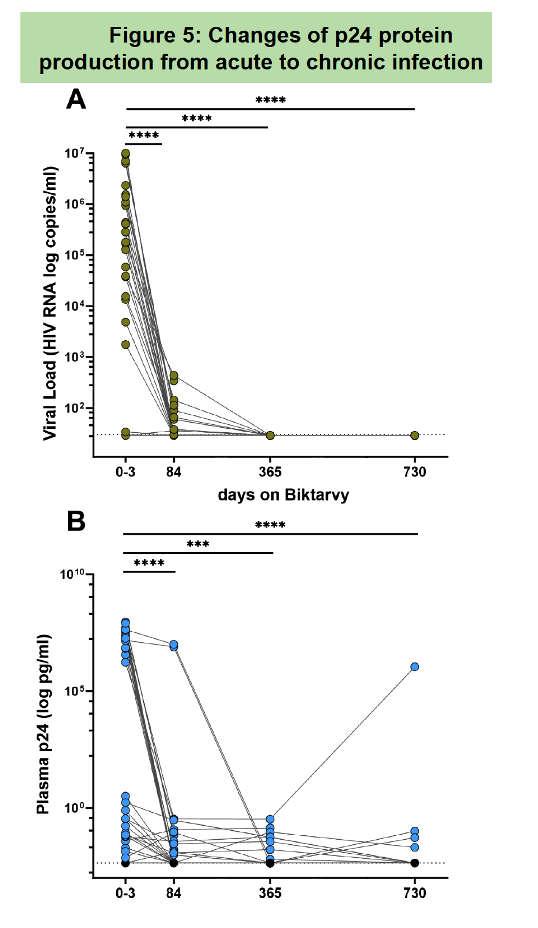
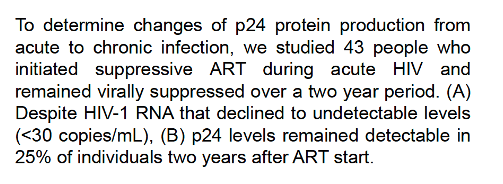
|
| |
|
 |
 |
|
|